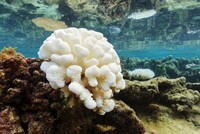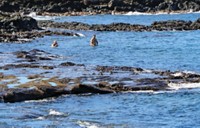Advertisement
Grab your lab coat. Let's get started
Welcome!
Welcome!
Create an account below to get 6 C&EN articles per month, receive newsletters and more - all free.
It seems this is your first time logging in online. Please enter the following information to continue.
As an ACS member you automatically get access to this site. All we need is few more details to create your reading experience.
Not you? Sign in with a different account.
Not you? Sign in with a different account.
ERROR 1
ERROR 1
ERROR 2
ERROR 2
ERROR 2
ERROR 2
ERROR 2
Password and Confirm password must match.
If you have an ACS member number, please enter it here so we can link this account to your membership. (optional)
ERROR 2
ACS values your privacy. By submitting your information, you are gaining access to C&EN and subscribing to our weekly newsletter. We use the information you provide to make your reading experience better, and we will never sell your data to third party members.
Environment
Sunscreens Release Hydrogen Peroxide Into Seawater
Emerging Contaminants: New study finds that titanium dioxide nanoparticles in sunscreens could produce enough hydrogen peroxide in coastal waters to stress algae
by Janet Pelley
August 8, 2014

Although most beachgoers reach for sunscreen to shield their skin from dangerous ultraviolet radiation, scientists know little about the environmental impact when the lotions wash off into nearshore waters. A new study finds that titanium dioxide nanoparticles in some sunscreens can generate hydrogen peroxide in coastal waters at levels high enough to stress algae (Environ. Sci. Technol. 2014, DOI: 10.1021/es5020696).
Earlier studies have analyzed the environmental toxicity of certain chemicals in sunscreens, including linking benzophenone to coral bleaching, says David Sánchez-Quiles, a marine chemist at the Mediterranean Institute for Advanced Studies, in Spain. But he realized that there hadn’t been studies of how sunscreens affect algal communities in seawater. These species are important because the entire aquatic food chain rests on energy fixed by algae.
Sánchez-Quiles and colleague Antonio Tovar-Sánchez wanted to track one of the most common UV filters in sunscreens, titanium dioxide nanoparticles, because the metal oxide generates toxic hydrogen peroxide in the presence of light. Silica or alumina coatings around the particles protect people’s skin from the H2O2, but these coatings dissolve in water, releasing the naked TiO2.
The duo hit popular Palmira beach on the Spanish island of Majorca in August 2013 to collect water samples in the bathing area throughout the day. The scientists measured H2O2 levels using a chemiluminescent assay and monitored algal biomass by measuring concentrations of chlorophyll a with a fluorometer.
Peroxide concentrations at the beach were less than 100 nM at dawn but peaked around noon at 278 nM, a level known to cause oxidative stress in algae (Mar. Pollut. Bull. 2014, DOI: 10.1016/j.marpolbul.2007.10.017). Previous studies have pegged hydrogen peroxide concentrations in the open Mediterranean Sea at 91 nM.
To show that sunscreens were driving the hydrogen peroxide spike at the beach, the researchers diluted a commercial sunscreen in seawater from a pristine coastal area. In the lab, they blasted the water with UV light equivalent to full sun at noon in summer. The sunscreen produced 10,202 nM of hydrogen peroxide, about 450 times as high as the level in the original seawater.
To test the impact on algae, the researchers mixed seawater in Teflon bags with a sunscreen concentration equal to half of that shown by other researchers to be acutely toxic to marine diatoms. They incubated the bags outdoors under natural light, and the mixture began to crank out H2O2. Once the H2O2 concentration rose above 1.7 µM, algae numbers crashed, declining by 81%. Although the sunscreen concentration used in the experiment is probably higher than is usually found in coastal seawater, the findings show that titanium dioxide nanoparticles can elevate H2O2 to levels lethal to algae.
“This is the first study to demonstrate in the field that sunscreens can produce hydrogen peroxide, and at levels high enough to affect phytoplankton,” says Damià Barceló, an environmental chemist at the Catalan Institute for Water Research, in Spain. Because the potential ecological consequences are concerning, he says the study should spur more research on how the compounds in sunscreens affect algal communities, as well as on ways to reduce the products’ environmental impacts.





Join the conversation
Contact the reporter
Submit a Letter to the Editor for publication
Engage with us on Twitter